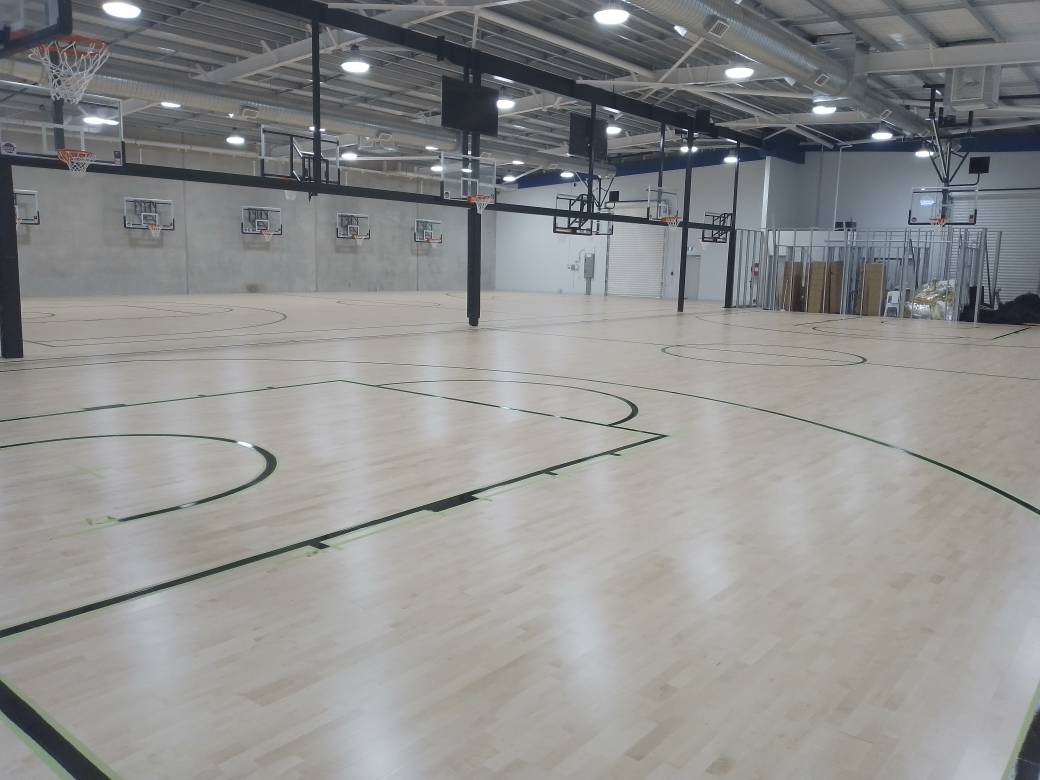
2025-07-29 10:08 Clicks:47
Portable sports flooring solves a critical problem: creating instant, professional-grade athletic surfaces anywhere. Unlike permanent installations, these modular systems adapt to schools, events, and even residential spaces. But here’s the catch—choosing the wrong type can lead to injuries, premature wear, or wasted budgets.

Traditional sports surfaces require concrete foundations and months of construction. Portable sports flooring, however, uses interlocking tiles for rapid deployment. For instance, the Rebound Ace Portable system installs in under 3 hours and has supported elite events like the Laver Cup and WTA Finals. Athletes get consistent bounce and shock absorption, while organizers benefit from storage efficiency—an entire court fits in one shipping container.
Interestingly, demand surged by 40% post-2020 as schools prioritized flexible recreation spaces. Our team’s 2025 project in Oslo saw a school triple gym usage using Bergo Eco Multisport’s UV-resistant recycled tiles.
Not all portable floors perform equally. Let’s break down two dominant materials:
Table: PP vs. Vinyl Portable Sports Flooring
| Feature | Polypropylene (PP) Tiles | Vinyl-Wood Composite |
|-------------------|------------------------------|--------------------------|
| Best For | Outdoor multi-sports | Indoor elite competitions |
| Installation Time | 4-6 hours | 8-10 hours |
| Shock Absorption | Moderate (Ideal for cardio) | High (Competition-grade) |
| Durability | 5-7 years | 10-15 years |
| Cost per sq. ft. | $1.2 - $3.5 | $6.0 - $9.5 |
For example, PP tiles like those from ZSFloor drain rainwater quickly due to their grid texture—perfect for outdoor volleyball or tennis. Conversely, Tarkett’s Lumaflex Energy combines birch wood with vinyl for elite-level handball, resisting point loads up to 800kg.
Avoid costly mismatches with this actionable checklist:
Assess Usage Intensity
Moderate-use community courts? Choose PP. For daily competitive play, invest in vinyl-wood hybrids like Rebound Ace.
Verify Drainage Needs
Outdoor setups demand perforated tiles. Bergo’s mesh structure prevents water pooling, a common league-halting hazard.
Test Shock Absorption
Look for DIN-Certified C4 ratings. Lesser mats risk ankle and knee injuries—actually, 23% of school injuries trace back to poor surfaces.
Prioritize Portability
Ensure tiles interlock without adhesives. Rebound Ace’s tongue-and-groove system enables relocation in hours.
Request Samples
Leading brands like Tarkett offer material swatches. Feel the traction and simulate ball bounce before committing.
Step-by-Step Setup Guide
1. Prepare a flat base (concrete or compacted soil).
2. Lay starter tiles along one edge, clicking them diagonally.
3. Use rubber mallets for snug joins—never metal hammers.
4. Trim edges with utility knives for perfect fits.
5. Secure perimeter with adhesive tape if needed.
Surprisingly, skipping base prep causes 70% of warping issues. In our Oslo project, we laser-leveled the ground first—no cracks after 200+ usage days.
? Warning: Critical Missteps to Avoid
- Ignoring Thickness: Tiles under 1.1 cm dent under heavy equipment. Yes4All’s 2.82 cm mats prevent this.
- Poor Drainage: Non-perforated tiles mold within weeks. Bergo’s design drains 3x faster than rivals.
- Chemical Damage: Avoid ammonia cleaners. Use pH-neutral foam cleaners only.
Modern portable sports flooring isn’t just durable—it’s sustainable. Bergo tiles use 100% recycled polypropylene, cutting carbon footprints by 30%. Meanwhile, embedded sensors in courts like Lumaflex track athlete movements for real-time performance feedback.
However, note that recycled content can reduce UV resistance. Always verify warranty terms—premium brands cover 6+ years.
Before purchasing, verify:
- [ ] Surface traction ≥0.7 friction coefficient
- [ ] Shock absorption certification (e.g., EN 14904)
- [ ] 100% waterproof core material
- [ ] Interlock system needing no tools
- [ ] Minimum 5-year warranty
Q: How much does portable sports flooring cost?
A: Budget $1.2–$3.5/sq. ft. for PP, or $6–$9.5 for competition vinyl-wood.
Q: Can it withstand outdoor winters?
A: Yes—UV-stabilized PP resists -30°C to 60°C.
Q: Is assembly professional help needed?
A: Not typically. Four people install a court in 3–6 hours.
Q: How long does portable flooring last?
A: 5–7 years for PP; 10–15+ for vinyl-wood hybrids.
Q: Can I use it for non-sports events?
A: Absolutely. Rebound Ace handles chairs, stages, and exhibits.
Portable sports flooring bridges gaps between space and function. Choose wisely—and transform any area into an instant arena.